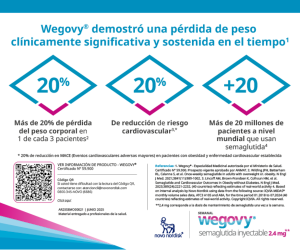Pielonefritis y nefritis intersticial
DOI:
https://doi.org/10.47196/diab.v53i1.144Palabras clave:
pielonefritis, pielonefritis enfisematosa, septicemia, nefritis intersticialResumen
La pielonefritis aguda es una infección frecuente que puede progresar a absceso o pielonefritis enfisematosa (PE) la mayoría de los casos se produce por Escherichia coli. La presentación clínica puede oscilar desde síntomas leves hasta septicemia. La posibilidad de bacteremia depende de factores del huésped: pacientes que gravemente enfermos, inmunocomprometidos, con obstrucción del tracto urinario y mayores de 65 años. Más del 90% de PE se presenta en pacientes con diabetes. La nefritis intersticial afecta el intersticio renal, puede ser aguda o crónica, la mayoría de las veces debido a AINES o antibióticos. Ambas patologías son predominantes en mujeres.
Citas
Consenso Argentino Intersociedades para el Manejo de la infección del tracto Urinario. Parte I Rev Panam Infectol 2007; 9(3):57-69
Czaja CA, Scholes D, Hooton TM, et al. Population based epidemiologic analysis of acute pyelonephritis. Clin Infect Dis 2007; 45(3):273-80.
Ki M, Park T, Choi B, et al. The epidemiology of acute pyelonephritis in South Korea, 1997-1999. Am J Epidemiol 2004; 160(10):985-93.
Lagu T, Rothberg MB, Shieh MS, et al. Hospitalizations, costs, and outcomes of severe sepsis in the United States 2003 to 2007. Crit Care Med 2012; 40(3):754-61.
Abraham G, Reddy YN, George G. Diagnosis of acute pyelonephritis with recent trends in management. Nephrol Dial Transplant. 2012; 27(9):3391-4.
Stamm WE, Hooton TM, Johnson JR, et al. Urinary tract infections: from pathogenesis to treatment. J Infect Dis 1989; 159(3):400-6.
Ferry SA, Holm SE, Stenlun H, et al. The natural course of uncomplicated lower urinary tract infection in women illustrated by a randomized placebo control study. Scand J Infect Dis. 2004;36(4):296-301.
Kim Y, Seo MR, Kim SJ, et al. Usefulness of blood cultures and radiologic imaging studies in the management of patients with community-acquired acute pyelonephritis. Infect Chemother 2017; 49(1):22-30.
Consenso Argentino Intersociedades para el Manejo de la Infección del Tracto Urinario. Parte III Rev Panam Infectol 2008;10 (1):48-57 .
Gupta K, Hooton TM, Naber KG, et al. International Clinical Practice Guidelines for the treatment of acute uncomplicated cystitis and pyelonephritis in women: a 2010 update by the Infectious Diseases Society of America and the European Society for Microbiology and Infectious Diseases Clin Infect Dis. 2011 Mar 1;52(5):e103-20
van Nieuwkoop C, Hoppe BP, Bonten TN, et al. Predicting the need for radiologic imaging in adults with febrile urinary tract infection. Clin Infect Dis 2010; 51(11):1266-72.
Godaly G, Ambite I, Svangborg C. Innate immunity and genetic determinants of urinary tract infection susceptibility. Curr Opin Infect Dis 2015;28(1):88-96.
McDonald HI, Nitsch D, Millet ER, et al. New estimates of the burden of acute community-acquired infections among older people with diabetes mellitus: a retrospective cohort study using linked electronic health records. Diabet Med 2014; 31(5):606-14.
Trivedi SC, Phatak SR, Trivedi RS. Retrospective comparison of clinical characteristics and in-hospital outcomes among diabetic and non-diabetic adults with acute pyelonephritis J Clin Diagn Res 2016 Oct;10(10):OC26-OC29.
Fukuda T, Bouchi R, Minami I, et al. Retrograde pyelonephritis and lumbar spondylitis as a result of Salmonella typhi in a type 2 diabetes patient with neurogenic bladder. J Diabetes Investigation 2016;7(3): 436-9.
Shokeir AA, El-Azab M, Mohsen T, et al. Emphysematous pyelonephritis: a 15 year experience with 20 cases. Urology 1997;49(3):343-6.
Tang HJ, Li CM, Yen MY, et al. Clinical characteristics of emphysematous pyelonephritis. J Microbiol Immunol Infect 2001; 34(2):125-30.
Misgar RA, Mubarik I, Wani AI, Bashir MI, et al. Emphysematous pyelonephritis: a
-year experience with 26 cases Indian Journal of Endocrinology and Metabolism 2016; 20(4):475-480.
Baker RJ, Pusey CD. The changing profile of acute tubulointerstitial nephritis. Nephrol Dial Transplant 2004; 19(1):8-11.
Bhaumik SK, Kher V, Arora P, et al. Evaluation of clinical and histological prognostic markers in drug-induced acute interstitial nephritis. Ren Fail 1996; 18(1):97-104.
Raghavan R, Eknoyan G. Acute interstitial nephritis. A reappraisal and update. Clin Nephrol 2014; 82(3):149-162.
Buysen JG, Houthoff HJ, Krediet RT, et al. Acute interstitial nephritis: a clinical and morphological study in 27 patients. Nephrol Dial Transplant 1990;5(2):94-9.
Schwarz A, Krause PH, Kunzendorf U, et al. The outcome of acute interstitial nephritis: risk factors for the transition from acute to chronic interstitial nephritis. Clin Nephrol 2000;54 (3):179-90.
Descargas
Publicado
Número
Sección
Licencia

Esta obra está bajo una licencia internacional Creative Commons Atribución-NoComercial-SinDerivadas 4.0.
Dirección Nacional de Derecho de Autor, Exp. N° 5.333.129. Instituto Nacional de la Propiedad Industrial, Marca «Revista de la Sociedad Argentina de Diabetes - Asociación Civil» N° de concesión 2.605.405 y N° de disposición 1.404/13.
La Revista de la SAD está licenciada bajo Licencia Creative Commons Atribución – No Comercial – Sin Obra Derivada 4.0 Internacional.
Por otra parte, la Revista SAD permite que los autores mantengan los derechos de autor sin restricciones.




























